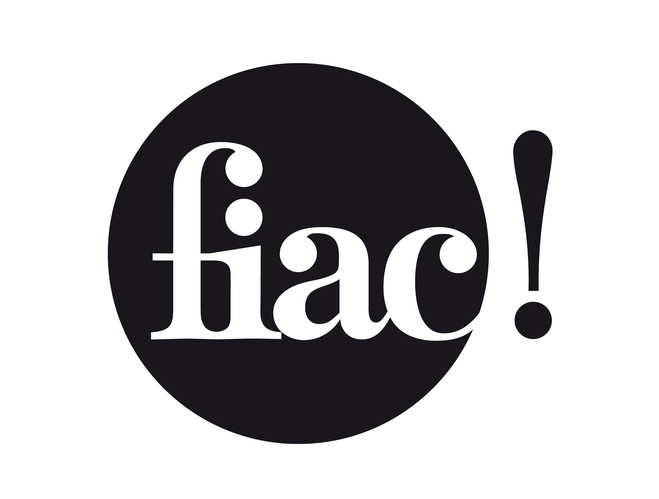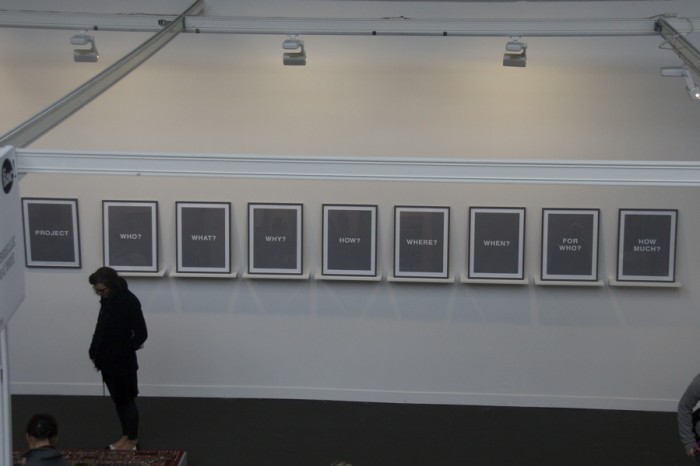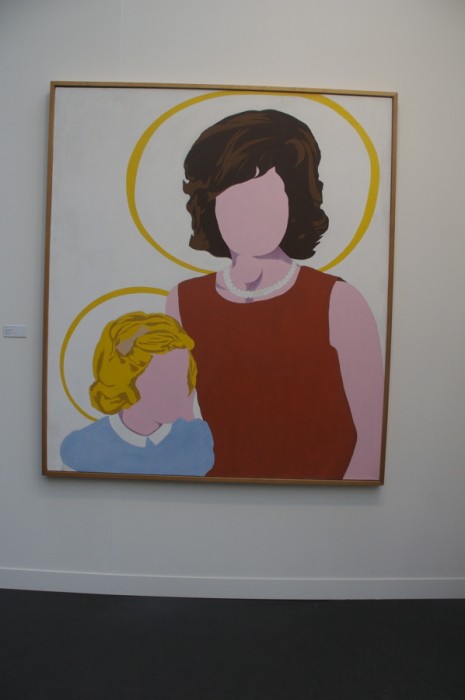November 3rd, 2009 by Rachel | Country: France | No Comments »
While I have a background in art history, I’ve only studied yesterday’s works and some current works. As an artist, it’s very important to have a well-rounded knowledge of art history so that I can understand the purpose of the concepts that exist in many works of art and why and how the concepts were developed. Often times, past works of art inspire me to create something. On the other hand, in order to move forward, I need to see art in trends that are occurring today and the trends that I could foresee. Timing could not have been better when I visited Paris two weeks ago as a huge art show was in action – Fiac!

This was the place where I could see works of art that are in trend today and that have potential to be in tomorrow’s art history textbooks. Before I go on, I’d like to share a photo that I took of an installation that I feel that is crucial to our studies in art.

In order to create an work of art and to put it in a show, we all certainly have to answer these questions! I have to admit that answering all of these questions – Who? What? Why? How? Where? When? For Who? How Much? – is not an easy task. Often times, artists mumble and say, “I just like the way this piece looks.” They need to go farther by asking WHY do they like the way the piece looks. Also, there are reasons to why we are creating art pieces and by that means, we have to answer the question – WHY are we creating the work of art and FOR WHO[M] are they for? While we are utilizing our creative minds when it comes to creating work of art, we are also using our critical thinking skills to answer these questions.
I am guilty to say that I unfortunately did not record the artist’s name of the one whom created this fantastic installation. If anyone know who did this piece, I would appreciate your letting me know.
Fiac is such an incredibly big art exhibit – it took up the entire space at the Grand Palais, a very well-known architecture built from 1897 to 1900 for the Universal Exhibition in 1900, and there was also another exhibition at the Louvre. I was certainly overwhelmed by the number of pieces; however, I found a few unusual work that are worth mentioning.

When I first saw this painting, Madonna and Child by Allan d’Arcangelo, I was completely intrigued by the lack of facial appearance. I was even more intrigued by the title of the work. Is there a symbolism of anonymity in this work? Perhaps because there are no facial features and in order to know who are the people, it is necessary to see the facial appearance in order to see the facial expressions and perhaps to recognize the person. The title is certainly interesting while it doesn’t appear to be a typical Madonna and Child painting although there are halos behind the mother and the child. This painting is probably depicting the notion of today’s Madonna and Child.